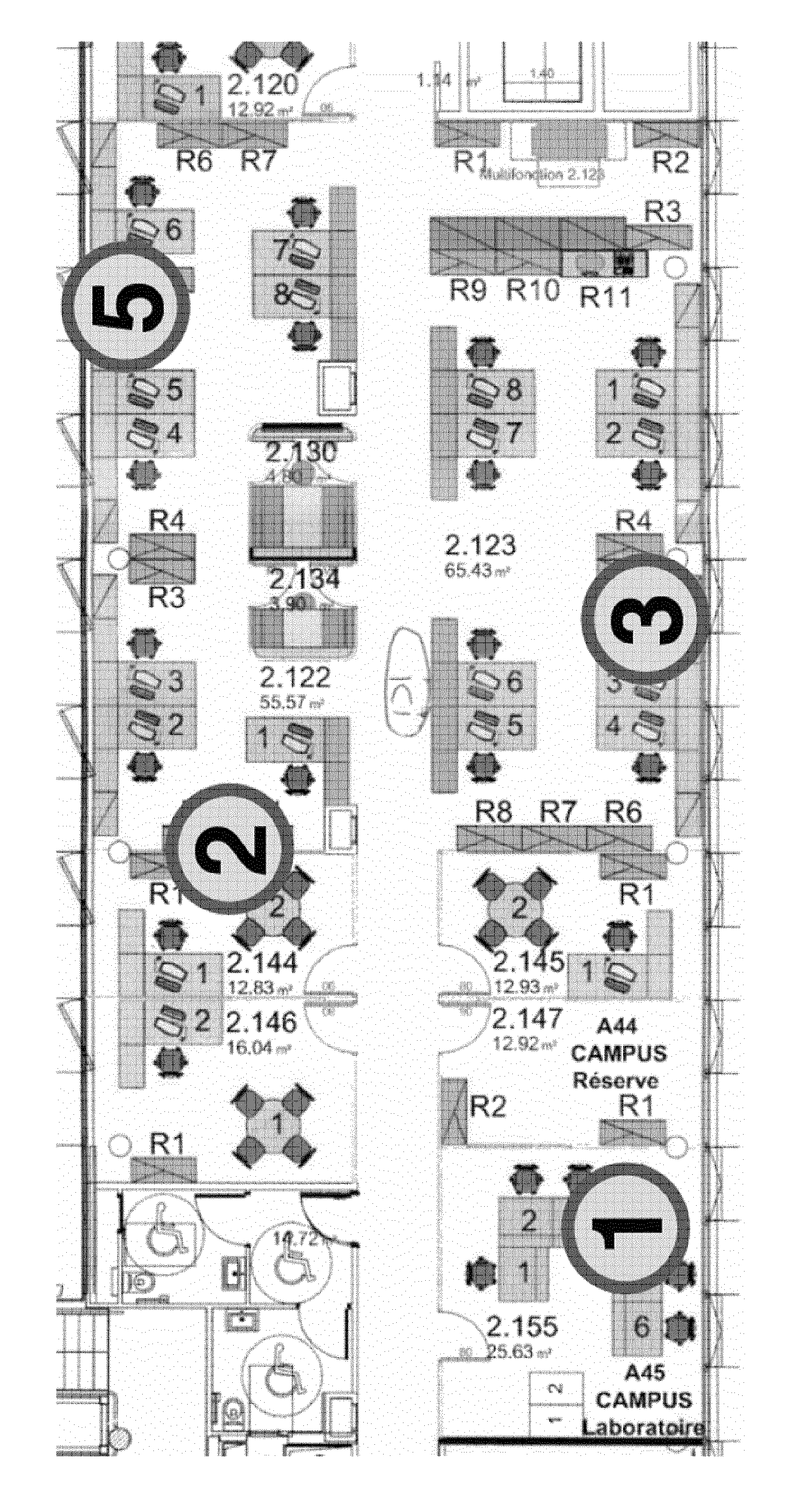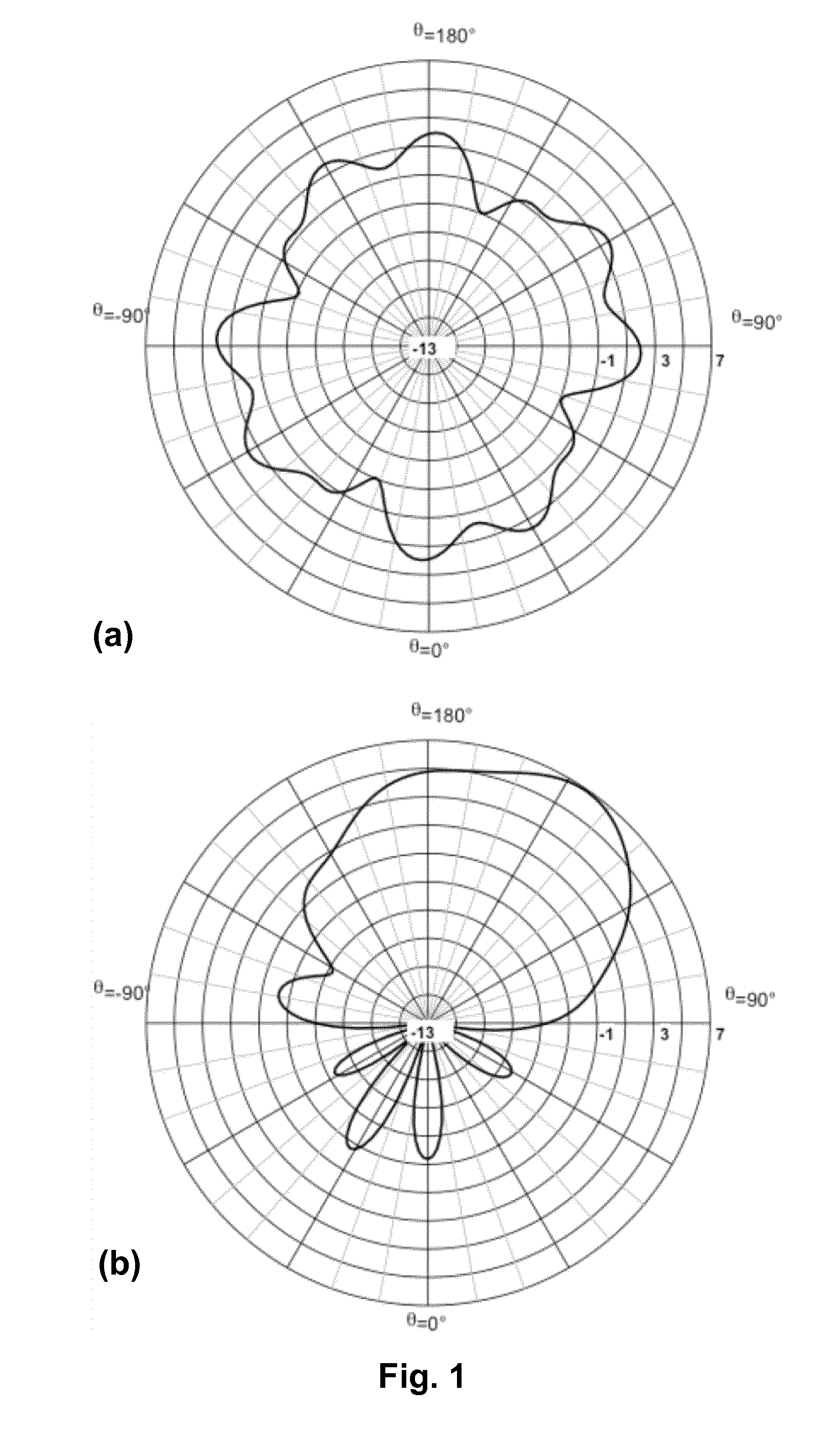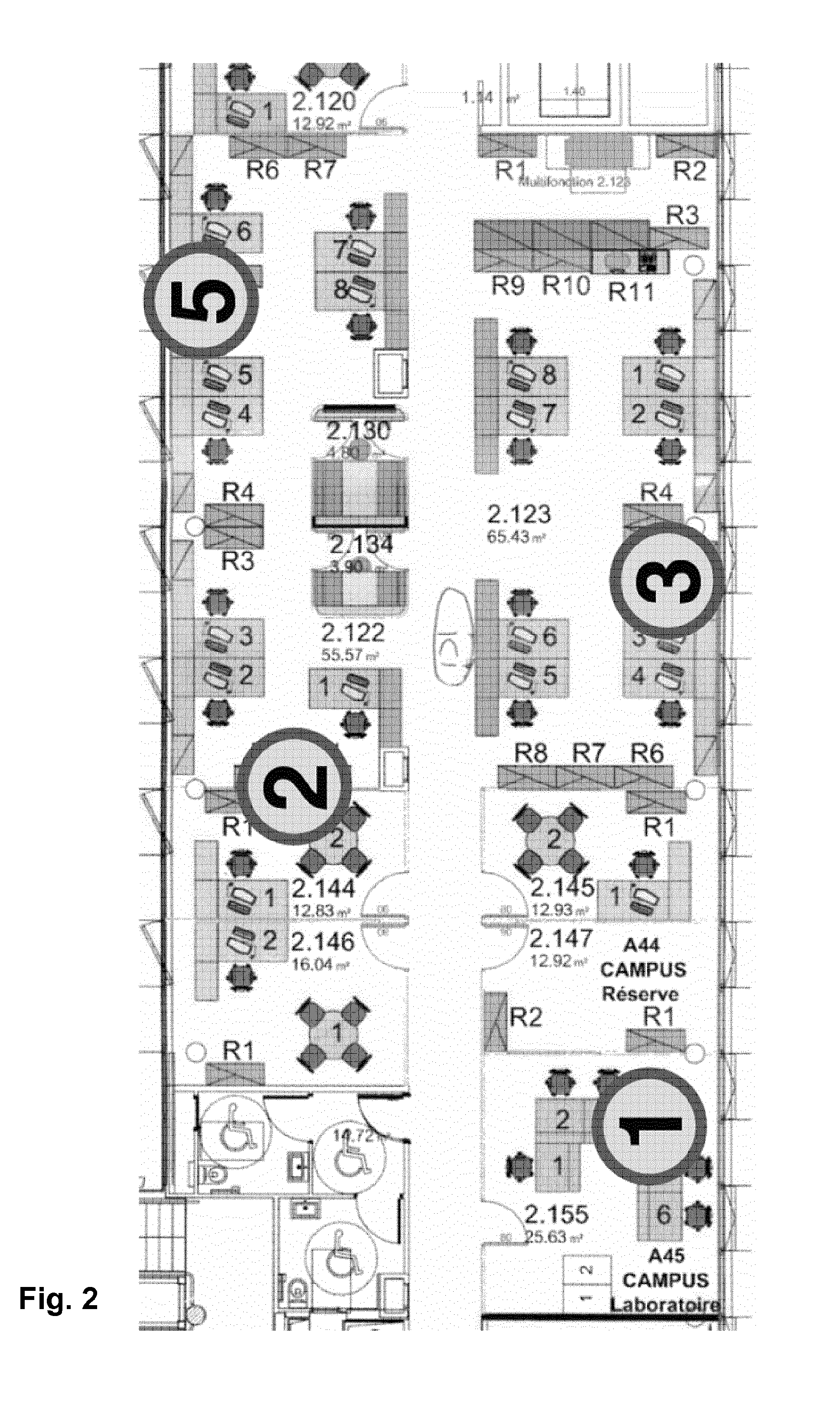Method of, and apparatus for, controlling a wireless connection in a MIMO system using multi-sector directional antennas
a wireless connection and multi-sector technology, applied in the field of controlling a wireless connection in a mimo system, can solve the problems of reducing directional antennas might decrease the capacity of a mimo link, and reducing the probability of a link loss, so as to avoid unstable link quality and link throughput, increase or drop throughput, the effect of high throughput gain
- Summary
- Abstract
- Description
- Claims
- Application Information
AI Technical Summary
Benefits of technology
Problems solved by technology
Method used
Image
Examples
Embodiment Construction
[0034]An exemplary apparatus in accordance with the invention is provided with at least two multi-sector antennas, each having four antenna elements. In one embodiment the antenna elements provide no directivity gain. The apparatus further has a processor, a program memory adapted to store program information during execution of program information, and a data memory adapted to store data during execution of the program information. The apparatus may further have a non-volatile storage memory, e.g. of the flash-memory type or electric erasable programmable ROM (EEPROM) type, for non-transitory storage of program information and / or data used during executing the program information. Other types of non-volatile storage memory are also conceivable, including optical or magnetic storage, and client / server data storage. The apparatus may further be equipped with a wired interface for receiving and transmitting data, e.g. for connecting to a LAN or to a host device. The wired interface ma...
PUM
 Login to View More
Login to View More Abstract
Description
Claims
Application Information
 Login to View More
Login to View More - R&D
- Intellectual Property
- Life Sciences
- Materials
- Tech Scout
- Unparalleled Data Quality
- Higher Quality Content
- 60% Fewer Hallucinations
Browse by: Latest US Patents, China's latest patents, Technical Efficacy Thesaurus, Application Domain, Technology Topic, Popular Technical Reports.
© 2025 PatSnap. All rights reserved.Legal|Privacy policy|Modern Slavery Act Transparency Statement|Sitemap|About US| Contact US: help@patsnap.com



